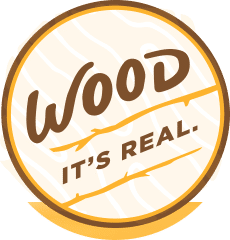by Michael Connelly, WIR Contributor
Students at Clemson University in Clemson, South Carolina found inspiration all around them when working on their submission to the United States Department of Energy’s 2015 Solar Decathlon: Indigo Pine.
Their 1,000 sq. ft., three-bedroom home pays homage to the tradition, culture, and construction materials widely available in South Carolina – indigo and Southern Yellow Pine.
Indigo Pine’s Use of Southern Yellow Pine: “An Obvious Choice”
Pine is an integral part of the house. Its availability and eco-friendly nature made it an obvious choice as the main building material, hence the name.
Assistant Professor at Clemson’s School of Architecture, Dustin Albright spoke with Wood. It’s Real. “We are located in a breadbasket of pine, if you will.” The university owns about 17,500 acres of experimental forest, said Albright. The timber is a local, natural renewable resource that has an amazing track record of success in the construction industry.
Pine provides structural support and requires much less energy to make it into a building material than other materials like concrete,” said Albright. Using Southern Yellow Pine was an “obvious choice.”
A Southern tradition, a large and inviting porch, welcomes visitors to come on in. The porch is made, of course, out of Southern Yellow Pine.
Innovation of Tradition
The only questions that the team faced, he said were, “How can we innovate with it; and how can we use the technology available to us?”
Albright said the answers came, in part, from a CNC (computer numerical controlled) milling machine called Sim(PLY) that can create almost any shape from plywood. The machine’s ability, paired with the design from Clemson students resulted in an innovative way to use Southern Yellow Pine that would further reduce the energy consumption at the construction site. Engineers designed each piece of plywood in a computer model to interlock with each other.
“There is no need for nails”, said Albright. The plywood pieces fit together so perfectly that you won’t find a hammer or screwdriver on the construction site. Furthermore, the home can shipped anywhere in the world via email – well, at least the building plans.
“The implications are huge,” explained Albright. “Your local fabricator can create the pieces you need to build your house and the energy needed to ship materials is greatly reduced,” said the professor.

Sim”PLY” looks to be fairly complicated, actually. Image via Clemson University.
The “Indigo” of Indigo Pine
Indigo Pine also pays tribute to another South Carolina’s cash crop, indigo.
Indigo Blue is the official color of South Carolina. It was a major crop for the state in past and is the prominent color in the state’s flag. To the students at Clemson’s School of Architecture, indigo “symbolizes the state’s tradition and culture,” according to a media release from the university.
Check Out Indigo Pine In Person
Indigo Pine, Clemson University’s entry to the 2015 Solar Decathlon was open to the public for viewing in Irvine California, October 8 to 11 and October 15 to 18 and will be on display indefinitely at the Botanical Gardens at Clemson University.
While Clemson didn’t take home the big prize, we applaud their innovative use of Southern Yellow Pine and are excited for others to learn from the project.
About the Solar Decathlon
The Solar Decathlon is an international competition focusing on reducing the energy consumption of residential buildings both in terms of ongoing use of energy and the initial requirements of energy to construct a home. Since 2013, the students at Clemson have been researching, designing and building a prototype house that does both, by using time-tested building materials and new technologies.
Team Indigo Pine
(Images are courtesy of Clemson University.)








